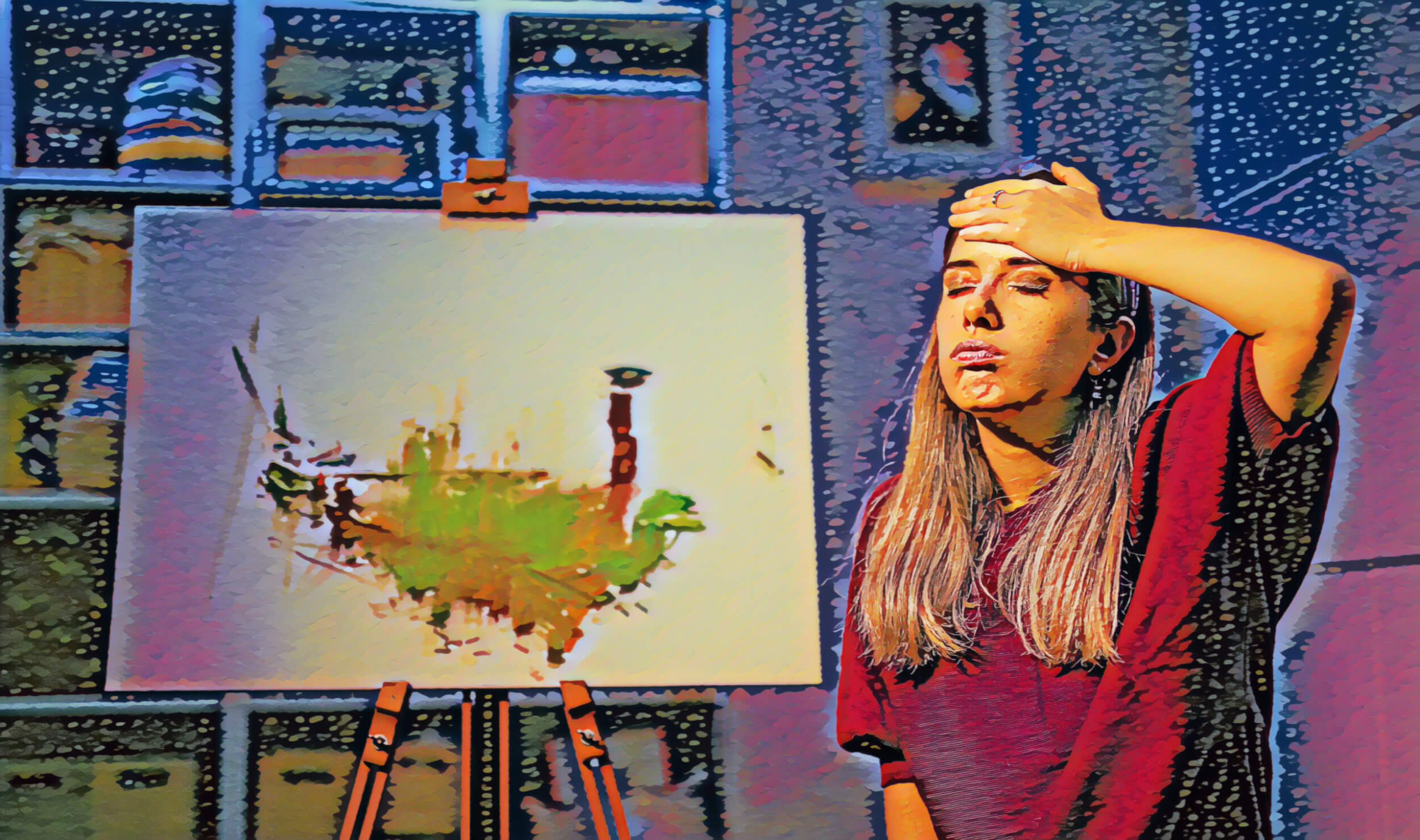Throughout my career as an art educator and artist, I have heard countless people express that they wish they had stuck with learning an instrument, or taken an art class after middle school, or had the courage to audition for a play. I’ve noticed that these comments tend to come immediately following an incredible performance or exhibit, when the joy of our students’ work has seeped into our psyche, a common experience that art has on us as humans. The audience has been moved by a work of art and then expresses a desire to have the ability to share the gift themselves.
One bit of information that there is often not enough time in the moment to share is that getting to the end of the creative process comes with a significant amount of discomfort. I leave that part out, so as not to be a downer, but it is true. Just ask the tired artists who went through the process.
Many of us in art education call it the creativity gap: the abyss between trying something for the first time and the creation of something to be proud of. In between is ugly, tiring, frustrating, and confusing. This chasm is downright uncomfortable. It is this discomfort that impedes most people’s progress as an artist. When things get hard, they bail.
In Colorado Academy’s Visual and Performing Arts Departments, we are not strangers to the realities of the creative process. We are all artists and educators who have built the lessons of perseverance into the fabric of our curricula. Don’t get me wrong—there is a tremendous amount of joy that comes with the process of making art—but it is a balance of highs and lows and everything in between, including boredom. We teach the students how to approach problems from multiple perspectives, how to lean on the techniques and skills inherent to the process, and how to support and empower one another when the going gets tough.
Another key ingredient to creative work (and this includes work outside of the arts) is patience: it takes time. The cast of the Upper School musical at CA rehearses for 80-100 hours before showtime, and this doesn’t include the hours their peers in the Technical Theater class take to build the set. Many of the teenage musicians in the Upper School Orchestra began playing their instruments as early as the First Grade. Portfolio artists exhibit work in their spring shows that they’ve been creating for six months, and they began the process of pursuing the Portfolio program as early as their Ninth or Tenth Grade year. Time gives us the opportunity to make a large volume of work, space for multiple iterations, and room for plenty of failure.
If you were to ask the painters in my Advanced 2D class what piece of advice I always share when the frustration kicks in, they’d say a part of the process is to actively hate your painting a minimum of ten times. In fact, if the piece feels “easy” throughout the process, it is often not a very dynamic work of art in the end. So, celebrate the frustration and keep at it. Practice being uncomfortable, work hard, find the joy in the process, then repeat.
